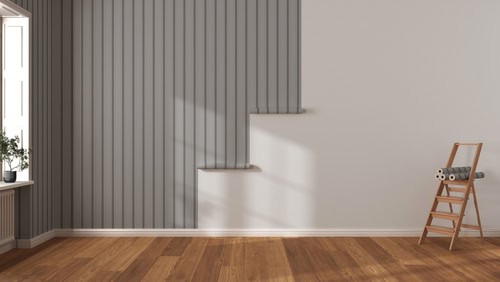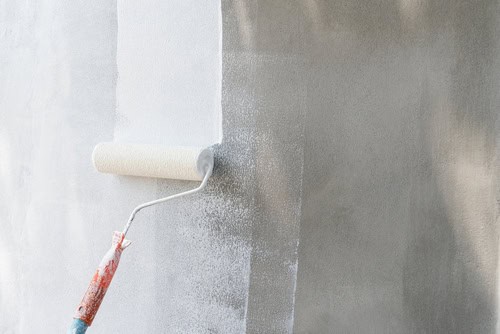
What Type Of Paint Should I Use For The Different Areas?
May 29, 2019
What are the advantages of painting your house?
May 29, 2019Painting Tip – Fix Hairline Cracking

What are hairline cracks?
Hairline cracks are usually harmless, but besides being eyesores, they are good breeding grounds for dirt, insects, etc. Most homes in Singapore are made of concrete, most durable forms of material for building homes. Although they require little maintenance, hairline cracks develop easily. Most commonly spotted above doors, around windows, ceilings, and in the corners of a room, hairline cracks are a common problem, which actually require more care than just mere repainting.
Why they happen?
Hairline can be cause by shifting of structures due to imperfect foundations. However, they are usually caused by shrinking on the surface during the process of curing.
Concrete shrinks and pulls apart when during curing and drying. Concrete needs a lot of time to dry, and sometimes, it is moved and cured before it is completely dry. This can hinder the curing process, because the concrete will not bond as it is supposed to, causing it to be weaker and pull apart.
How repair hairline cracks?
If you have been painting over the crack, and the problem persists, it may be due to a deeper, underlying problem – the concrete. To repair the crack, you can apply a filling solution, let it dry, sand the area, and THEN repaint.
Step1: Clean the hairline crack
Extract loose particles of concrete, and also dirt that may have gotten trapped in those cracks over time.
Step 2: Fill in the crack
Make sure that the filling solution spreads thoughout the insides of the crack.
Step 3: Even out the crack.
To ensure a smooth finish, you will need to spread the fillings with a scraper, and make sure that there is no sign of plaster jutting out.
Step 4: Let the fillings dry.
This is to ensure that ALL the fillings seep in. This could take about a day.
Step 5: Check the cracks again.
Inspect the cracks for any more empty pockets – which could happen in the process of drying where the wet plaster seep deeper into the walls. You may need to apply another round of fillings to fill up small cracks –usually very minor. While patching that up, think about it as ‘sealing’ the cracks.
Step 6 – Paint!
Now, you’re ready to do a paint job, for the last time in a long, long time – because the cracks will probably never appear again.
How to avoid hairline cracks
It is always better to attend to hairline cracks while they are still relatively minor. Though rare, problems like damaged pipes, electric casings and wires could occur. Left alone, the cracks could get worse, and repair works will be more complicated, and maybe even incur more costs on your side. As they say, prevention is better than cure! Last of all, remember to be patient and allow the fillings to dry completely, or risk another round of hard work!




